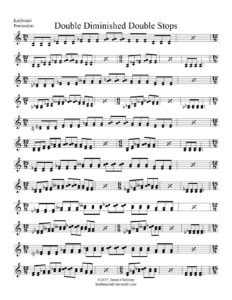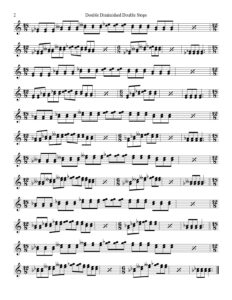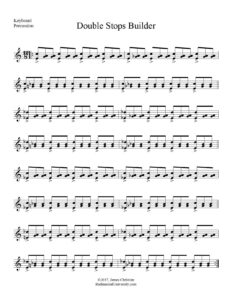
Click on the images to enlarge…

This exercise for two-mallet keyboard percussion utilizes double stops with a diminished 7th chord (also known as double diminished). Starting with A, the pattern cycles through all 12 keys, going up by a half step each time.
The goal of this exercise is to build fluidity of movement with double stops around the keyboard. You start by playing three repetitions on each interval, then two, then one. These patterns cycle through 18/8, 12/8, and 6/8 time signatures, respectively.
With all double stops, be careful to strike both notes together. As you get faster, I would recommend striking the upper manual bars on the edge, instead of the center. Strive for accuracy and consistent sound. Stay relaxed, and let the stroke come from the wrists.
As you get more comfortable with this exercise, it can be a good endurance builder. Don’t slow down on the 6/8 measures! Keep a steady pulse throughout the exercise. A metronome will be invaluable for keeping tempo. For added endurance, repeat several times.
Have fun with this one!

